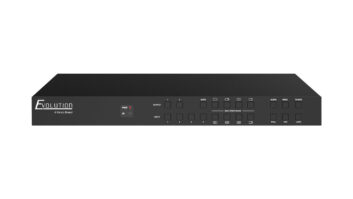The sign said $4.09.
That’s what I paid for a gallon of gas at my local station in Brooklyn, N.Y., a few days ago. While Europeans might think of that price as a bargain, I did a double-take.
Now I’m not a typical driver. I take the subway to work everyday. My wife and I can, and do, walk to do much of our food shopping. So while I had gas-pump sticker shock, gasoline is not going to destroy my household budget directly.
But the exorbitant price of gasoline is destroying many family budgets directly, and slamming it indirectly with higher prices for every single staple you can think of, except maybe consumer electronics.
The whole situation reminds me of the mid-1970s. The first oil embargo was launched by Middle East producers in 1973. We were still in Vietnam, a war as costly and unpopular as Iraq. By the time I began driving in 1976, I was paying 67 cents a gallon, more than double the average 1973 price. Economically, the United States experienced in the mid-1970s something called “stagflation,” a combination of no growth and inflation.
It reminded Jeffrey D. Sachs, director of the Earth Institute at Columbia University, of the 1970s too. He has written an excellent piece on this, called “Stagflation Is Back,” at CNNMoney.com.
So what does this have to do with consumer electronics?
While signing over your stimulus checks and tax refunds directly to your local gas station or energy companies, forget Iraq, global warming, the credit crunch and housing foreclosures for a second. The $4.09 sign at the gas pump reminds everyone everyday where most of their disposable income, and for some their savings, is going.
It’s stopping people from shopping and driving to stores.
The U.S. Department of Transportation reported last week that March had the sharpest yearly drop in driving for any month since records were kept, and that began in 1942. (If you remember your World War II history, March 1942 was almost four months after the Pearl Harbor attack.) And the Conference Board reported last week that the Consumer Confidence Index hit a 16-year low in May.
Both are not great trends for store traffic or shopping.
If you want to look back a how the CE industry fared in the mid-1970s when stagflation first appeared, take a look at analog color TV sales. According to Consumer Electronics Association (CEA) numbers, unit and dollar sales from 1974 started to go down and didn’t really rebound until 1978. CEA statistics show a similar pattern for total CE sales. While some also blamed a lack of industry innovation, the economic malaise was also a major factor.
Today’s industry is far more diversified and loaded with more innovation than in the mid-1970s. There are tens, if not hundreds, more categories and subcategories of product. And there is the Internet.
Consumer electronics is ingrained in everyday life around the globe in ways few, if any, could have imagined in the mid-1970s.
So how does Jeffrey D. Sachs of Columbia University think we will pull out of this economic and ecological malaise over the long term? With a large dose of technology.
That’s comforting. But in the short term, the harsh reality of today’s economic malaise will take a toll on even the most established manufacturers, retailers and distributors. You can make a case that it has already begun.
That’s the shadow that a sign for $4.09 a gallon of gas casts on this industry and just about every other industry one can think of.













